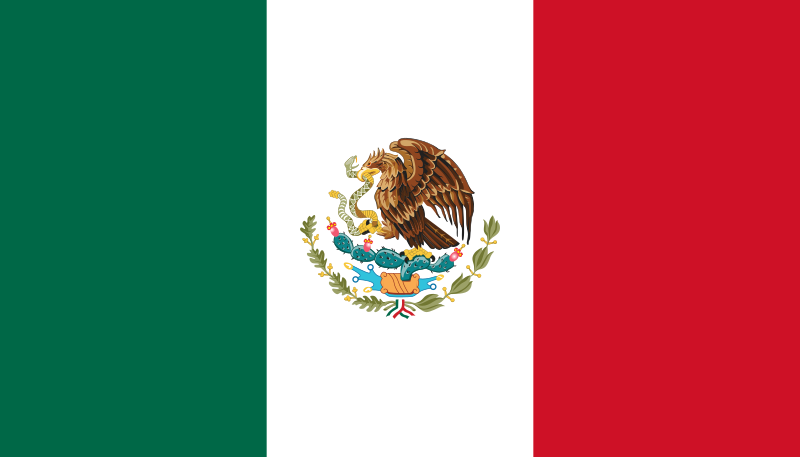
GLOBAL BIOECONOMY STUDY
Bioeconomy is a rapidly growing field with the potential to address some of the world's most pressing challenges, from climate change to food security. The intersection of bio and economics makes it quite an interesting field. As an emerging field, it has the potential to influence a country’s economy positively while solving some of the most pressing problems of our time. This global bioeconomy study examines the current state and future potential of this sector, analyzing its economic impact, environmental benefits, and social considerations across twenty countries and gives insights into how each of these countries are collaborating to step ahead in harnessing the potential of bioeconomy in the way it fits the country’s landscape. This study could provide valuable insights for policymakers, businesses, and researchers working to advance a sustainable bioeconomy.
Argentina
Argentina’s bioeconomy thrives on its vast agricultural sector, producing significant amounts of soybeans, maize, and wheat. The country is a leader in biotechnology, particularly in genetically modified crops, which enhance productivity and environmental sustainability. Argentina’s vast pampas region supports a robust livestock industry, contributing to its export-oriented bioeconomy. The government promotes biofuels, particularly biodiesel from soybeans, as part of its renewable energy strategy. Additionally, Argentina is exploring bioproducts from its rich biodiversity in sectors like pharmaceuticals and bioenergy.

Bangladesh
Bangladesh’s bioeconomy is anchored in its rich agricultural landscape, producing rice, jute, and fish. The country focuses on agro-based industries, such as textiles and jute products, leveraging its position as a leading global exporter. Bangladesh’s fisheries and aquaculture sectors are crucial, providing both economic benefits and food security. The government is pushing for advancements in biotechnology to improve crop yields and resilience against climate change. Additionally, Bangladesh is exploring biomass energy as a renewable resource, given its abundance of agricultural residues.

Brazil
Brazil’s bioeconomy is robust and diverse, driven by its agricultural and forestry sectors. The country is the world’s largest producer of sugarcane, which is used for both food and biofuel production, particularly ethanol. Brazil is a leading exporter of soybeans, coffee, and beef, with significant investments in biotechnology to enhance productivity and sustainability. The Amazon rainforest offers vast potential for bioproducts, though its exploitation raises environmental concerns. Brazil also invests in bioenergy, including bioelectricity from sugarcane bagasse and biodiesel from soybeans.

China
China’s bioeconomy is rapidly expanding, with significant investments in biotechnology, bioenergy, and biomedicine. The country is the world’s largest producer of rice, wheat, and tea, focusing on improving crop yields through genetic engineering and precision farming. China is also a leader in aquaculture, supplying a major portion of the global seafood market. The government promotes the development of bio-based materials and chemicals to reduce reliance on fossil fuels. Additionally, China is investing heavily in biopharmaceuticals, aiming to become a global leader in the sector.

CANADA
Canada’s bioeconomy leverages its vast natural resources, including forestry, agriculture, and fisheries. The country is a leader in sustainable forestry, producing bio-based products like paper, bioenergy, and bioplastics. Canada’s agricultural sector focuses on grains, oilseeds, and livestock, with advancements in biotechnology to improve productivity and environmental sustainability. The government promotes the use of biomass for energy and industrial applications, supporting the transition to a low-carbon economy. Canada also has a growing biopharmaceutical industry, its strong research and innovation capabilities.

Haiti
Haiti’s bioeconomy is primarily agricultural, with small-scale farming dominating the landscape. The country produces coffee, cocoa, and mangoes, which are significant for both local consumption and export. Haiti’s bioeconomy faces challenges due to deforestation and soil erosion, impacting agricultural productivity. The government and NGOs are working on reforestation and sustainable agriculture projects to improve food security and livelihoods. Haiti also explores the potential of bioenergy from agricultural residues and waste to reduce reliance on imported fossil fuels.

India
India’s bioeconomy is diverse and rapidly growing, anchored in its large agricultural sector. The country is a major producer of rice, wheat, and pulses, with significant investments in biotechnology to enhance crop yields and resilience. India’s biopharmaceutical industry is one of the largest globally, focusing on vaccines and generic medicines. The government promotes biofuels, particularly from sugarcane and non-food crops, as part of its renewable energy strategy. India also invests in bio-based materials and chemicals to support sustainable development.

indonesia
Indonesia’s bioeconomy is heavily reliant on its rich biodiversity and extensive agricultural sector. The country is the world’s largest producer of palm oil, used in food and biofuels. Indonesia’s forestry sector is significant, producing timber and non-timber forest products, though it faces challenges related to deforestation. The government is investing in biotechnology to improve crop yields and promote sustainable agriculture. Indonesia also explores the potential of bioenergy from palm oil, biomass, and biogas to support its energy needs.

Iraq
Iraq’s bioeconomy is emerging, with a focus on reviving its agricultural sector. The country produces dates, wheat, and barley, and is working to improve food security through modern farming techniques and biotechnology. Iraq’s fertile Mesopotamian plains offer significant potential for agricultural expansion, despite challenges like water scarcity and soil salinity. The government is exploring bioenergy options, particularly from agricultural residues and waste, to diversify its energy sources. Iraq also looks to develop bioproducts from its medicinal plants and biodiversity.

Israel
Israel’s bioeconomy is highly innovative, driven by advanced biotechnology and agricultural technologies. The country excels in precision farming, water-efficient agriculture, and high-yield crop varieties. Israel is a leader in the development of bio-based products, including pharmaceuticals and biochemicals. The government promotes the use of bioenergy, particularly from agricultural and organic waste, to support its energy independence. Israel’s research institutions and startups are at the forefront of biotechnological advancements, contributing to a vibrant bioeconomy.

Japan
Japan’s bioeconomy is sophisticated, with a strong focus on biotechnology, biopharmaceuticals, and bioenergy. The country invests heavily in agricultural research to improve crop yields and develop resilient varieties. Japan’s biopharmaceutical industry is advanced, focusing on regenerative medicine and biologics. The government promotes the development of bio-based materials, such as bioplastics, to support sustainability. Japan also explores the use of algae and other biomass for biofuels, contributing to its renewable energy goals and reducing its carbon footprint.

Mexico
Mexico’s bioeconomy is diverse, leveraging its rich agricultural and biodiversity resources. The country is a major producer of maize, coffee, and avocados, focusing on sustainable agricultural practices and biotechnology to improve productivity. Mexico’s forestry sector produces timber and non-timber products, though it faces deforestation challenges. The government supports the development of biofuels, particularly from agave and other crops, as part of its renewable energy strategy. Mexico also invests in bioproducts derived from its unique flora, including pharmaceuticals and cosmetics.

Nepal
Nepal’s bioeconomy is primarily agricultural, with a focus on small-scale farming and forestry. The country produces rice, maize, and millet, and is working to improve food security through sustainable farming practices and agroforestry. Nepal’s diverse ecosystems offer potential for bioproducts, including medicinal plants and essential oils. The government promotes the use of biomass for energy, particularly from agricultural residues and forest resources. Nepal is exploring community-based biotechnologies to enhance agricultural productivity and support rural livelihoods.

Nigeria
Nigeria’s bioeconomy is driven by its vast agricultural sector and biodiversity. The country is a major producer of cassava, yams, and oil palm, with significant potential for bioproducts and bioenergy. Nigeria’s agricultural sector faces challenges like climate change and land degradation, prompting investments in biotechnology and sustainable practices. Nigeria also explores the use of its rich biodiversity for pharmaceuticals and biochemicals, supporting economic diversification.

Palestine
Palestine’s bioeconomy is focused on small-scale agriculture and sustainable practices. The region produces olives, dates, and vegetables, emphasizing organic farming and water-efficient techniques. Palestine faces challenges like limited water resources and political instability, impacting agricultural productivity. Palestine is facing crisi now . Palestine is also exploring the potential of bioenergy from agricultural and organic waste to support energy needs and reduce environmental impact.

South Africa
South Africa’s bioeconomy is diverse, encompassing agriculture, forestry, and biotechnology. The country produces a wide range of crops, including maize, sugarcane, and wine grapes, focusing on improving yields and sustainability through advanced farming techniques. South Africa’s forestry sector supports a robust bio-based industry, producing timber, paper, and bioenergy. The government promotes the development of biopharmaceuticals and bio-based chemicals, leveraging its strong research capabilities. South Africa also explores the potential of bioenergy from biomass and biogas to support its energy transition.

South Korea
South Korea’s bioeconomy is innovative, driven by advances in biotechnology, biopharmaceuticals, and bioenergy. The country invests heavily in agricultural research to develop high-yield, disease-resistant crops. South Korea’s biopharmaceutical industry is advanced, focusing on biologics and regenerative medicine. South Korea also explores the use of algae and other biomass for bioenergy, supporting its renewable energy goals and reducing carbon emissions.

Singapore
Singapore’s bioeconomy is centered on biotechnology, biopharmaceuticals, and sustainable food production. The country invests heavily in research and development to advance its capabilities in biomanufacturing and precision agriculture. Singapore is a hub for biopharmaceutical production, focusing on biologics and medical technology. The government promotes urban agriculture and aquaculture to enhance food security and reduce reliance on imports. Singapore also explores the potential of bio-based materials and bioenergy to support its sustainability goals and drive economic growth.

Sri Lanka
Sri Lanka’s bioeconomy is primarily agricultural, with a focus on sustainable farming and biodiversity conservation. The country produces tea, rubber, and coconut, emphasizing organic practices and agroforestry. Sri Lanka’s rich biodiversity offers potential for bioproducts, including herbal medicines and essential oils. The government supports the development of bioenergy from biomass and agricultural residues to reduce dependence on imported fossil fuels. Sri Lanka also explores the use of biotechnologies to enhance agricultural productivity and support rural livelihoods.

Turkey
Turkey’s bioeconomy leverages its diverse agricultural sector and rich biodiversity. The country is a major producer of fruits, vegetables, and nuts, focusing on improving yields and sustainability through modern farming practices. The government promotes the development of biopharmaceuticals and bio-based materials to support economic diversification and innovation. Turkey also invests in bioenergy from biomass, supporting its renewable energy goals and reducing carbon emissions.

